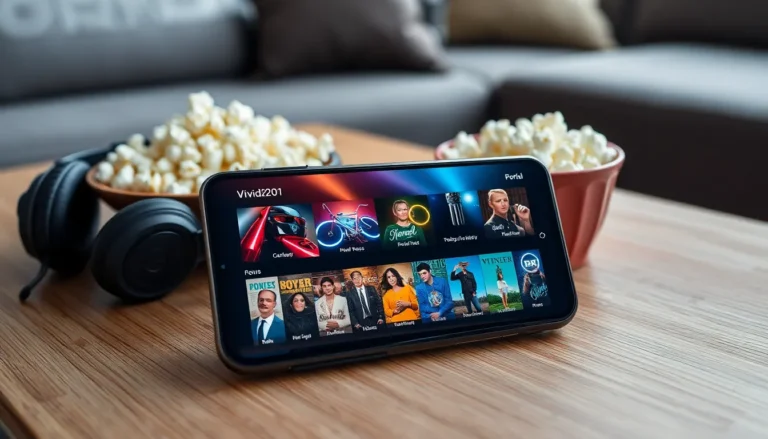In a world where your toaster could be plotting to take over your breakfast routine, the Internet of Things (IoT) stands as the unsung hero of modern technology. But with great connectivity comes great responsibility—or at least a need for some serious standards. Navigating the maze of IoT standards can feel like trying to assemble IKEA furniture without instructions, but fear not!
Table of Contents
ToggleOverview of Internet of Things Standards
Internet of Things standards play a vital role in ensuring seamless operation among diverse devices and networks. These standards establish protocols for communication, data exchange, and security across various types of IoT devices. Organizations develop them to promote compatibility and interoperability, enabling devices from different manufacturers to work together effectively.
The Institute of Electrical and Electronics Engineers (IEEE) and the Internet Engineering Task Force (IETF) are key bodies in creating these standards. The IEEE 802.15.4 standard, for example, provides specifications for low-rate wireless personal area networks. Similarly, the IETF’s Constrained Application Protocol (CoAP) offers a lightweight communication protocol suitable for resource-limited devices.
Data security is another critical component of IoT standards. The IoT Security Foundation developed a framework focusing on essential security requirements for IoT systems to protect users from potential threats. Furthermore, ENISA, the European Union Agency for Cybersecurity, provides best practices that enhance security measures for IoT implementations.
Mobility and scalability also influence IoT standards, addressing the dynamic nature of device networks. As the number of connected devices continues to rise, standards must adapt to accommodate growth while ensuring stability. The OASIS Reference Architecture for the Internet of Things is a valuable resource in this regard, outlining various components necessary for managing complex IoT ecosystems.
Understanding these standards simplifies the procurement and integration of IoT devices. By adhering to established protocols, manufacturers and developers can address the challenges associated with interoperability, security, and scalability. Developers possess a clear path toward creating effective and connected IoT solutions.
Importance of Internet of Things Standards

Establishing standards for the Internet of Things (IoT) holds significant value in maximizing the potential of connected devices. These standards provide essential frameworks that allow diverse devices to communicate effectively.
Enhancing Interoperability
Interoperability acts as a cornerstone for effective IoT implementation. Devices from various manufacturers can seamlessly work together when standardized protocols are in place. Securing compatibility reduces integration challenges, enabling users to mix and match devices without concern. Organizations like IEEE and IETF play crucial roles in creating guidelines that foster this compatibility. Consequently, streamlined data exchange occurs, allowing devices to share information efficiently and reliably. As a result, manufacturers benefit from expanding their offerings while users enjoy more options.
Ensuring Security and Privacy
Security and privacy represent critical concerns in the IoT landscape. Robust standards help protect sensitive data as it travels between devices. Established frameworks from the IoT Security Foundation provide guidelines aimed at minimizing vulnerabilities. These standards ensure that manufacturers incorporate essential security measures into their devices. Implementing best practices from ENISA aids in creating defenses against potential threats. Trust in IoT devices improves when users know their data remains secure, fostering wider adoption. Strong security protocols ultimately enhance users’ confidence in integrating IoT solutions into their daily routines.
Key Internet of Things Standards
Understanding key standards in the Internet of Things (IoT) helps ensure effective connectivity and functionality across devices. These standards guide communication protocols, data exchange, and security measures.
IEEE 802.15.4
IEEE 802.15.4 forms the foundation for low-rate wireless personal area networks. This standard focuses on low power consumption and is ideal for applications such as smart home devices and industrial sensors. It facilitates connections between devices over short-range distances, promoting energy efficiency. Additionally, IEEE 802.15.4 supports multiple topologies, including peer-to-peer and star configurations, enhancing flexibility. Devices utilizing this standard benefit from lower costs and simplified communication.
MQTT
MQTT, or Message Queuing Telemetry Transport, is a lightweight messaging protocol. It’s designed for low-bandwidth and high-latency networks, making it suitable for IoT solutions. Applications like remote monitoring and telemetry frequently leverage MQTT due to its publish-subscribe model. This model efficiently manages message distribution between devices and subscribers. Additionally, MQTT ensures a minimal network footprint by reducing the amount of overhead in each message. Its support for various quality of service levels allows for greater control over message delivery.
CoAP
CoAP, or Constrained Application Protocol, offers a simplified mechanism for resource-constrained devices. It relates closely to HTTP, providing a framework for web services in IoT environments. CoAP is valuable for managing low-power and limited communication devices, allowing them to interact seamlessly. Features like asynchronous message exchange and a built-in reliability mechanism enhance its functionality. Devices using CoAP can operate efficiently in diverse networks while maintaining low resource consumption. By employing CoAP, developers ensure robust communication in challenging environments.
Challenges in Implementing Internet of Things Standards
Implementing Internet of Things standards presents several challenges that impact the effectiveness of device interoperability and security.
Fragmentation of Standards
Fragmentation creates hurdles in coherent IoT implementation. Numerous organizations generate diverse standards, leading to a complex landscape for manufacturers and developers. Manufacturers often face difficulty in choosing relevant standards for their devices due to this plethora of options. Device compatibility becomes an issue as products may not adhere to the same protocol, resulting in operational inefficiencies. Users experience frustration when devices from different manufacturers fail to communicate seamlessly. Consequently, industry collaboration is essential for reducing fragmentation and establishing universal standards.
Compliance and Regulatory Issues
Compliance and regulatory challenges significantly affect IoT adoption. Governments and regulatory bodies impose various standards to ensure safety and security but may not always align with industry needs. Organizations frequently struggle to keep pace with changing regulations while also prioritizing the implementation of IoT technologies. The complexity of meeting these regulatory requirements can delay product launches and drive costs higher. Additionally, non-compliance poses risks such as potential fines or market access restrictions, compelling companies to navigate these hurdles carefully.
Future Trends in Internet of Things Standards
Emerging trends in IoT standards focus on enhanced security protocols. With growing cyber threats, organizations prioritize the development of standards that ensure strong encryption and authentication mechanisms. Increased reliance on machine-to-machine communication necessitates these standards for reliable interactions.
Interoperability remains critical as a diverse array of devices proliferates. Future standards will likely emphasize seamless communication between devices from different manufacturers, fostering compatibility in smart homes, industries, and cities. Such capabilities streamline user experiences and support broad technological ecosystems.
Sustainability is gaining traction within IoT standards. As awareness of environmental impact grows, standardizing energy-efficient protocols will become essential. Devices optimized for low power usage not only promote sustainability but reduce operational costs for consumers and businesses alike.
Regulatory compliance is evolving as governments adapt to the advancing IoT landscape. Future standards may align with these shifting regulations to accommodate diverse industry needs. Keeping abreast of compliance requirements can facilitate smoother market entry for new products.
Data interoperability frameworks are also anticipated to grow in importance. Efficient data sharing across platforms and applications requires standardized formats. Efforts to create unified data models might enhance analytics, revealing deeper insights from interconnected devices.
Emphasis on edge computing trends will shape IoT standards as well. Processing data closer to the source reduces latency and conserves bandwidth. This approach will gain traction, especially for real-time applications in smart cities and industrial automation.
Overall, these trends signify a dynamic landscape for IoT standards. As technology evolves, staying informed of these ongoing developments plays a crucial role in navigating the future of connected devices.
The landscape of IoT standards is continually evolving as technology advances. With the growing number of connected devices, the need for robust standards becomes increasingly critical. Organizations are working diligently to create frameworks that enhance interoperability and security while addressing emerging challenges.
As the industry moves forward, staying updated on these developments will be essential for businesses and consumers alike. Embracing effective IoT standards not only fosters innovation but also ensures a safer and more efficient connected environment. The future of IoT hinges on the successful implementation of these standards, paving the way for a more integrated and sustainable digital world.


